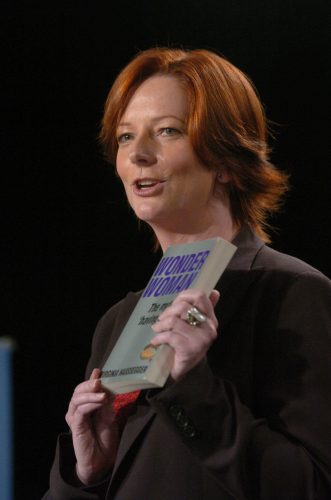If you’ve never seen a severed limb, it’s hard to know how you will react.
What struck me most about the dismembered arm that flashed on to my computer screen was how neat and tidy the amputation appeared.
The exposed flesh looked just like any meaty chunk you would find in a butcher’s shop. In fact, so fascinated by the apparent authenticity of the body part, I failed to take in the message – until I reopened the email, for a second look.
But that’s the problem with shock- tactic advertising. It gets you in: grips you with gruesome imagery, and triggers a mental debate that swings from disgust to morbid intrigue.
But what’s the point? If there is one, it’s lost on the squeamish, and peripheral to the excitement of horror.
The photo image of the severed arm carried the message, ”Willing to cut off your right arm to keep your daughter from harm?” The email is an unofficial offshoot from this year’s White Ribbon Day campaign, created by the advertising gurus at Saatchi and Saatchi.
While the gruesome email might be seen by few, the current TV ad running as a community announcement is targeted at everyone.
Thankfully, the 60-second ad stops at the point of amputation, but we nevertheless get to see the grisly lead- up. The ad begins with a father leaving his young daughter to stand alone while he steps in front of a fast-moving bus; crawls over broken glass dragging his bare feet; swims in shark-infested waters; and finally lies still on an operating table as surgeons rev a drill and prepare to amputate. It’s bizarre stuff. And throughout the filmic close-ups of the father’s pain and the little girl’s stress, we hear the repetitious drum- beat monologue of ”for my daughter … for my daughter”.
UNIFEM, the organisation behind the community awareness campaign, hopes that by next Saturday, the International Day for the Elimination of Violence Against Women, half a million Australians will be wearing a white ribbon. But if the campaign’s own web blog, now bulging with public protest, is anything to go by, some of those white ribbons might be blood- stained.
While no one can argue with the validity of the ad campaign’s intention – to raise awareness of violence against women and draw men into the frame of responsibility – the confronting imagery has unfortunately muddied the message. Demands for the ad to be withdrawn have come from a broad sector of would-be allies in the prevention of violence, such as the Mental Health Council of Australia, Lifeline and Sane Australia, as well as some of those who work at the coal face of domestic violence in women’s refuges.
The problem, according to the ad’s critics, is the potential for the imagery to encourage or incite self- harm, or even suicide. After all, that’s what the father in the ad appears to be doing when he steps into the path of a speeding bus, having abandoned his little girl on the footpath. And we watch this to the beat of ”for my daughter”. Now a trio of health professionals and White Ribbon Day ambassadors has rushed out a media statement in defence of the ad, insisting it will not cause ”copy-cat behaviour”, because suicide attempts and self harm aren’t triggered by TV ads. They are probably right. The real aim of the ad, they said, was to ”establish an outlandish alternative reality based on popular metaphors”.
Perhaps right there is the problem. Those ”popular metaphors” such as men being willing to walk over glass, cut off a right arm, leap in front of a bus and swim with sharks, all continue to perpetuate a myth about masculinity. It’s a well worn, tired old myth that depicts all men as tough, strong, fearless, and ready to meet violence with violence.
The ad does nothing to show men how to take greater care or responsibility for the women in their lives, or how to speak up against violence in the face of a blokey culture that condones it.
But the imagery does feed men’s fear about being seen to be weak, afraid and unmasculine. The stereotypical image of men as big, brutish and capable of violent action is starkly contrasted against the sweet innocence of the young, helpless girl, in need of protection.
I can’t see how such outdated constructs of manhood can be helpful in the elimination of violence against women.
A White Ribbon Day ambassador and a member of the leadership group that devised the ad campaign, Michael Flood, says he is now ”kicking myself” for not paying greater attention to the imagery used.
He says the campaign is about focusing on the positive roles men can play in ending violence against women. But as a tireless expert in this field, he was forced to admit this week that ”the actual images used don’t serve this purpose well”.
It’s a great shame that so much good will, good intention and unpaid effort has been poured into a campaign that has got us all thinking about the toughness of men and their capacity to crawl over broken glass, instead of the truth about the violence perpetuated against women.
The real shock flashing on to our computer screens, and causing us tell our workmates to ”come and check this out”, should not come from severed arms or blokes swimming with sharks. It should come from the unadorned facts: 57 per cent of Australian women will be violently or sexually assaulted by a man during their lifetime. Over the past 12 months, 440,000 Australian women were attacked. Since the age of 15, more than three million Australian women have experienced some form of assault. Why aren’t these figures alone enough to shock?





